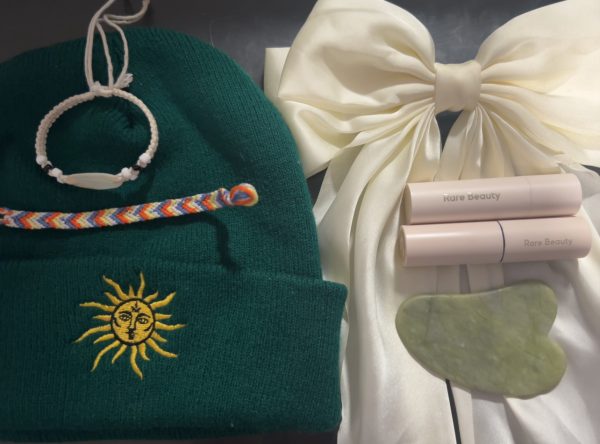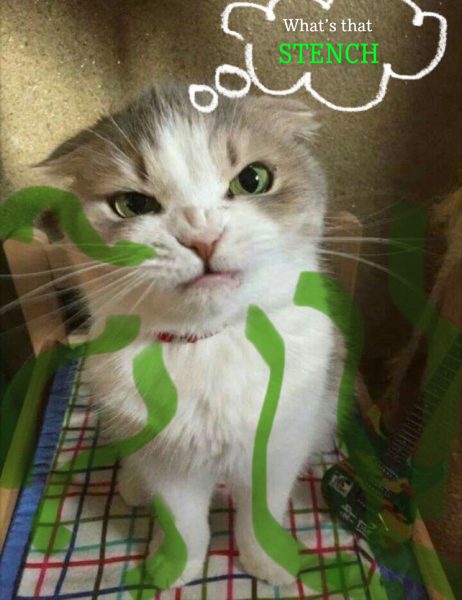Creating Art Can Sometimes Be Like Pulling Teeth
February 13, 2023
Having a dentist pull teeth is no big surprise, but imagine finding out that a dentist right here in Elkhart was also keeping people’s teeth.
A dentist named Dr. Joseph Stamp, who started his practice in the 1940s, pulled so many teeth over time that he began preserving them with chemicals in the basement of his office. Then, as a lasting memorial for his dog Prince, Stamp decided to encase all of these teeth in a concrete “blob” after the dog’s passing.
For decades, this “memorial” received mix reactions–and continues to do so today. Senior Damien Wakes’ initial reaction is quite strong. “He is a sick person who should not have his dental license!” Wakes exclaims. “And,” he adds on, “it is very weird for using other people’s teeth like this just because his dog died.” However, Wakes also admits that he does not know the whole story behind Stamp’s motives. “Who even has an idea to make a full brick out of teeth?” he continues to question. Wakes doesn’t object to having a memorial for a pet but would opt for a different style. “Since I am normal, I would cremate the dog and put him on a shelf on top of a fireplace with framed pictures of him around the urn.”
So, is the strangeness in a dentist retaining the teeth he’s pulled? Or, is the objection more about the memorial itself. Mr. Arthur Hughes, an art teacher, is adamant that a dentist shouldn’t save other people’s teeth–let alone use them in art. He compares Stamp to a twisted version of the tooth fairy, who also collects teeth left underneath children’s pillows. “The tooth fairy is a fun childhood tale,” Hughes begins, “but hearing that Dr. Stamp collected them is not a childhood story. It is a nightmare similar to Krampus!” Continuing, “It is a tragedy that he is dead, since he should have had his license stripped and be in jail.” As with Wakes, Hughes would remember his pets in a different way. “I would cremate them and mix their ashes into food and eat them so they will always be with me!” Hughes sarcastically jokes. In truth, he would choose a more pragmatic route. “I would bury the dog and get another dog when the time is right.”
Although not an “artist” by trade, Stamp is not alone in his use of unusual materials to create masterpieces. For instance, Richard Schlatter chose to depict the face of Abraham Lincoln by using $245 worth of pennies–over 24,000 in all. The final product was a 12 x 8-foot masterpiece. If one can imagine it, it’s been used: Cheese. Toast. Fish heads. However, not all are as “tasty.” Graffiti artist KATSU used his own feces to create a portrait of Mark Zukerburg to show his disgust for the Facebook founder. Another artist, Marc Quinn, used 10 pints of his own frozen blood to sculpt a bust of himself, titled “Self.” Suddenly, Dr. Stamp doesn’t look so eccentric.
Still, t is crazy to think that someone’s tooth can be stuck inside a huge rock for other people to admire. Yet, in Dr. Stamp’s rock, people can find all kinds of teeth: incisors, canines, and molars–sometimes whole and sometimes only bits and pieces–some well taken care of, others browning from neglect. Crowns and roots were also found…but no one could find gold fillings. The names of the people remain as big of a mystery as Stamp’s motives. Even Dr. Stamp’s descendants have yet to learn why he would do something like this.
Once located at the corner of Riverside and Lexington, the “tooth brick” has been uprooted from its original location and is now a permanent fixture of the Time Was Museum in Elkhart, located just north of the intersection of North Main St. and Jackson Blvd.




















Mia Stamp • Sep 21, 2023 at 7:51 pm
Y’all this is my grandfather you’re talking about